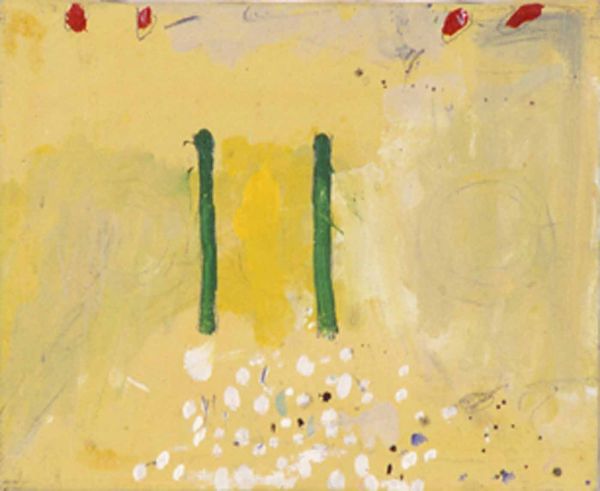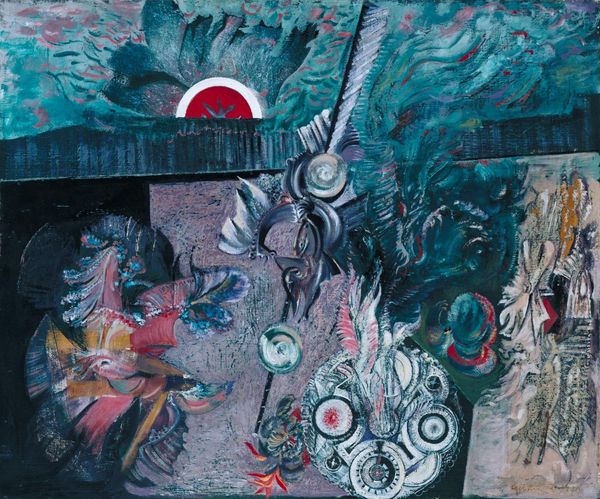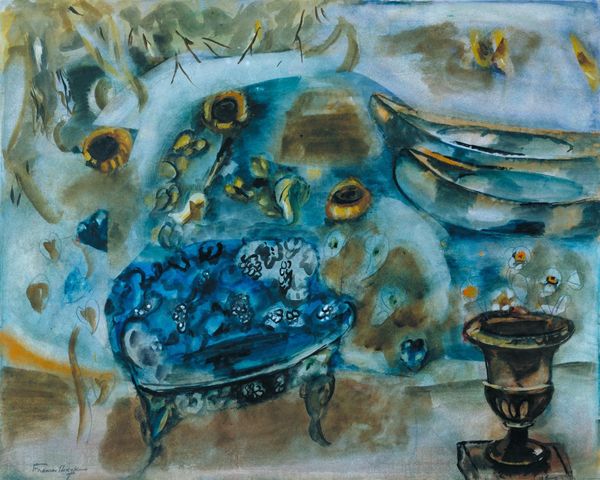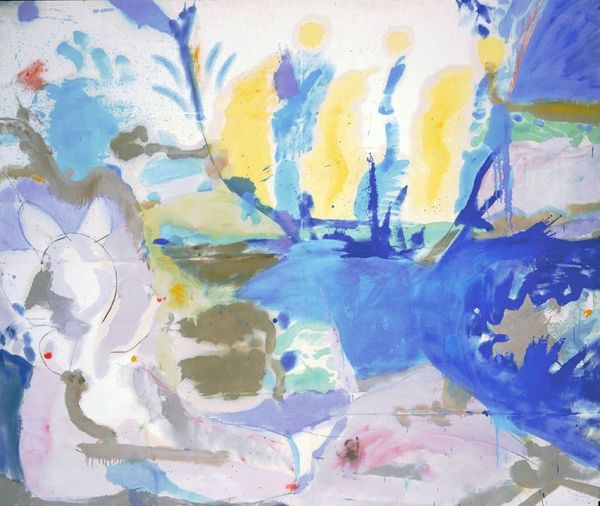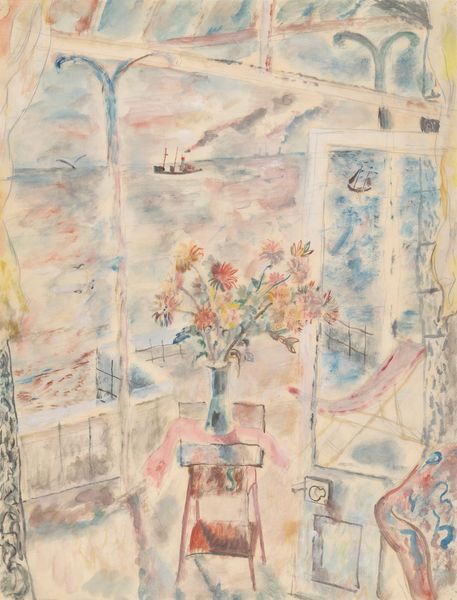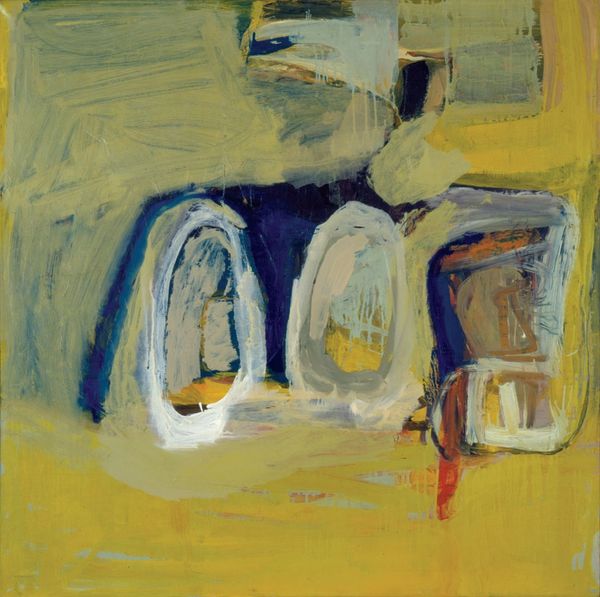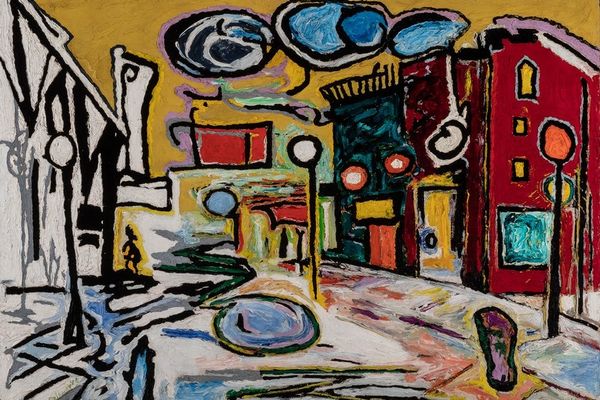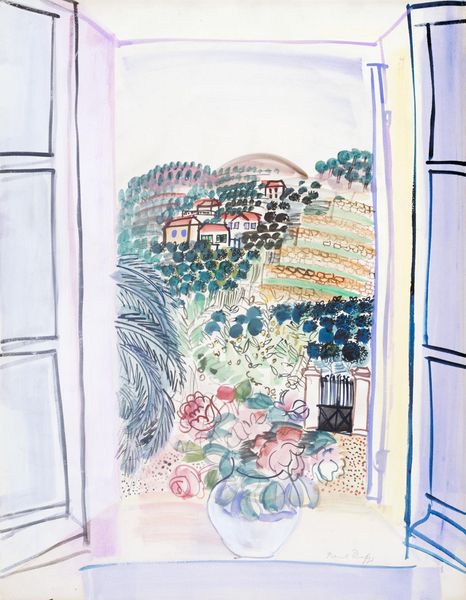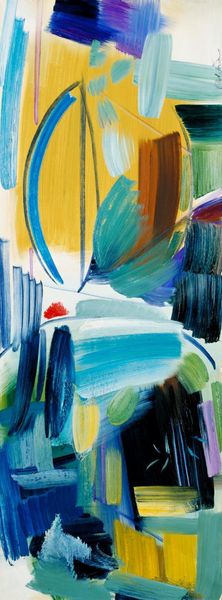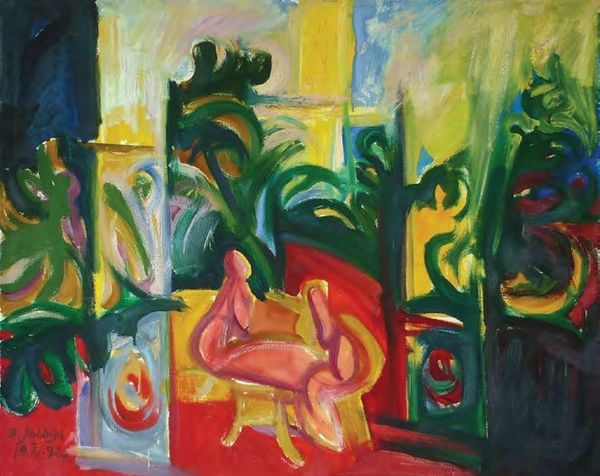
Copyright: Raoul Dufy,Fair Use
Curator: Here we have Raoul Dufy’s "Console With Two Windows," painted in 1948. Dufy, known for his Fauvist leanings, offers us a domestic interior infused with vibrant colours. The scene, dominated by a sunny yellow console, juxtaposes views through two separate windows. What are your initial thoughts? Editor: My first impression is the sheer confidence in the application of the oil paint. It’s light, airy, and yet there's a strange tension between the architectural rigidity implied by the window frames and the decorative looseness of the console’s ornamentation. It feels deliberately unsteady. Curator: I agree about the instability. Looking through a gendered lens, one could almost interpret the work as a challenge to the rigid conventions of domesticity prevalent in post-war Europe. Consider the symbolism: the "window" often symbolizes female perspectives and constrained viewpoints within social structure. Editor: It’s interesting you frame the discussion of social norms, however I keep coming back to the craftsmanship in constructing this work, the relationship between material, labor, and class. Think of the paint itself: the layering, the deliberate blurring. Dufy is using quite standard materials here. Curator: Absolutely, but his "blurring," his "undoing," becomes an artistic tool to question patriarchal social order, don’t you think? Dufy subtly critiques established gender roles and artistic authority by employing these expressive techniques, which mirror challenges to dominant, mostly white, masculine discourse of the time. Editor: Possibly, but let’s also consider what’s being depicted. There are distinct renderings, like, those very graphic red-and-brown strokes outlining the tiled floor in the foreground versus the architecture viewed outside, offering clues about the society and culture. Can you give us some sociohistorical contexts in your view? Curator: During this era, with the Second World War's impact still lingering, personal space—like a home viewed through a window—acquired loaded meaning, suggesting confinement or liberty and the yearning for escape. With all considered, what one initially perceives to be only one image takes an unsettling quality—a testament to Dufy's complex investigation of confinement, opportunity, and expression in postwar France. Editor: Indeed. Dufy uses very mundane things to express these tensions—material tension of the paint, labor involved. A painting from a time when "make do and mend" applied as much to cultural assumptions as it did to the repairing of physical goods. Thank you!
Comments
No comments
Be the first to comment and join the conversation on the ultimate creative platform.

